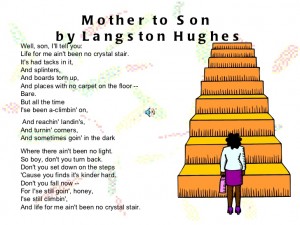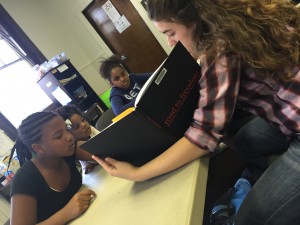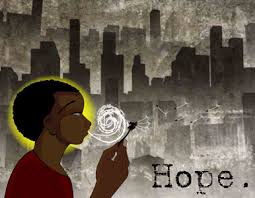Over the last six weeks, we have had the opportunity to aid the community partner Hope Station Opportunity Area: Carlisle or more well-known as Hope Station. Launched in 2000, Hope Station was created with its first substantial grant support from Allfirst Bank. As a non-profit organization, Hope Station was designed to enhance the quality of life, health, safety, and economic opportunities for the people who live in the neighborhood. With programs such as H.I.R.E. Plus Program: Helping Individuals Retain Employment, Health Fair/Back to School Bash, Juneteenth Celebration, and more, Hope Station has significantly impacted the Carlisle community in its short sixteen years of existences. During our time at Hope Station we focused on finding ways to improve their after school program, Kids’ Cafe. The Kids’ Cafe provides the youth of Carlisle, typically Black and/or low-income, a daily after school snack during the week. We have been focusing on the distribution of healthy foods and gradual elimination of unhealthy foods. The importance of our project was not only to provide healthy food but more importantly to introduce healthier eating habits.
In terms of social justice, the work we have been doing has been centered around food justice. As defined by the Just Food organization, which focuses on the empowerment of NYC neighborhoods through the integration of urban farming, “Food justice is when communities choose to exercise their right to grow, sell, and eat healthy food”. The importance of being able to access healthy food options is imperative for maintaining good health. Accessible food options are often confined to corner stores in urban communities. Corner stores offer no fresh food options and an abundance of unhealthy foods. When a community is presented with a corner store on each corner that provides low costing foods, it’s luring the community to eat unhealthy. This pressing issue is why food justice efforts are a necessity and should be brought to the attention of not only the affected community but the whole city as it is a city issue. We hope our contribution to the food justice initiatives of Hope Station can be a part of the foundation that gradually brings attention to this city issue.

Personal Narrative: Legacy Watkins
Kids Café provides food for over 100 kids on a daily basis, ages ranging from Pre-K to high school. The past 3 months I have spent over 2 hours per week making sandwiches and snack bags to give to the kids. Our initial goal was to find healthy food to give the kids after school and develop a weekly menu. The kids were surveyed on what they would like to eat and also were allowed to taste foods that could be added to the menu. Finding healthy foods that the kids want to eat was challenging. Fresh fruits such as strawberries, apples, bananas, and oranges seem to go well with the kids. In addition to making fruit part of their after school snack, a 100% fruit juice or water was added as a healthier drink option. We are continuously trying to find ways to improve the methods of how we grow food and the ways in which we eat it. We are currently in the process of trying to start a garden at Hope Station in effort to teach kids about healthy food and how to grow it themselves. If Hope Station Kids Café were to start a garden it would not only give the kids a great learning experience of social justice through food or food justice but also help them make healthier choices and be mindful of where the food they consume comes from. The garden can provide education about the ethics of care directly relating to food because it involves caring for the well-being of the land and workers. Also by starting a garden we give the community access to organic foods, which the Hope Station could choose to turn into a business to keep money in the Black community.
Food is a basic human right in which every individual should have access to healthy, nutritious food sufficient for a healthy living. Food is not only a source of nutrition but also a way for communities to connect because it is multicultural, anti-racist, and anti-sexist. Although some food stereotypes can bring negative notions to a marginalized group of people it is used as a way to unify people. After taking a course at Dickinson called African American Foodways, I learned that food was used to create communities and also communicate trust and love. At Hope Station Kids Cafe this can be shown through the bonds we have began to form with the Carlisle community as Dickinson students through food.
The media doesn’t directly highlight healthy food access as often as they highlight other social justice issues such as racism and sexism. Each of the issues are equally important and each are connected. Racism is fighting for the economic and social advancement of a marginalized group of people based on race which directly relates to food justice because food has become a weapon to self-destruction based on race and economic standing. There are no grocery store or organic stands near Hope Station that permits access for the Black community to healthy food. This is often the case in urban communities and we are taking necessary steps to better that. The work done at Hope Station Kids Café supports the argument of unity through oppression that can be received from articles such as Power, Justice & the Environment: A Critical Appraisal of the Environmental Justice Movement. The Kids Café ultimate goal is to provide children access to a healthier menu and education, while also forming relationships through food.
My experience at Hope Station Kids Café has been a great experience and beneficial to my idea of social justice. I am appreciative to have had the opportunity to work with Hope Station’s Kids’ Cafe. It has been a mind opening experience to my privilege on Dickinson’s campus and also furthered my knowledge of what I perceive as one of the most undermined injustices of today’s society. I hope to continue to work with Hope Station Kids’ Cafe to help provide support and knowledge to the students but also preserve the relationships formed in this space.
Personal Narrative: Sofina Odero
During the late 1960s to the early 1980s, The Black Panther Party for Self Defense actively focused on social justice for Black communities throughout the United States. Their own desire to free Black people from the social injustices of the White supremacy could be seen when looking at the programs they initiated such as their Ten-Point Program. With an emphasis on communal justice for the Black community, The Black Panther Party wanted Black people to be able to determine their own destiny. The Black Panther Party’s Ten-Point Program listed their demands which was in line with the Black Power and Black nationalism movements.
Another program they initiated was their breakfast program for schoolchildren, which fed Black children before school. The Black Panther Party for Self Defense noted an aspect of social justice which was typically overlooked, food justice, and made a change for the well-being of the future of Black communities, the Black youth. Their breakfast program fed hundreds of thousands of Black children daily throughout the school week. This effort provided financially insecure, working-class and poor Black families the means to feed their children. This program reminded me of the the Kid’s Café program as it also focuses on feeding Black schoolchildren. With the same mentality the Black Panther Party had, Hope Station recognized the importance of providing food for children as it physically fuels their bodies for success.
During the weeks of working at the Kid’s Café, I focused my efforts on documenting the quality control and distribution of the food. I logged the initial state of the food which was coming to the program and from that, noticed the extra effort needed for providing safe food. The necessity of our vigilance while preparing sandwiches and washing fruits with exposed edible skin was clear as we were the only barrier before distribution of the food. While the donated food was given out of generosity, the possibility of receiving unusable foods was an issue that was of constant concern. This was not the fault of the donators as the program was more than appreciative to receive the donated foods, but it was a reminder of the quality of food in the surrounding community and what was left for donation efforts in the city. The quality control of the served food was dependent on our attentiveness.
Another aspect that required undivided attention was distribution. More specifically, it was the portions we enforced while distributing the food. It was noticeable that portion size was not a concern for the Carlisle youth as many tried to take three to four times more than the single serving we provided. That is not to say that they did not need the abundance but it was impeding our efforts of feeding all the schoolchildren as the surrounding schools left out at different times. With that, we had to be sure we were able to maintain enough food to provide every schoolchild an after school snack. This issue of supply, demand, and need was indisputable, and while the Kids’ Cafe was answering this need, this experience showed me that the city of Carlisle could do much more for its Black community and provide more avenues of local healthy food within this population.
Overall, my experience with Hope Station and the Kids’ Cafe was humbling and eye-opening as I not only found a population of people in which I had so much in common with but I was able to recognize the privilege of my positionality in the city of Carlisle as a Black undergraduate Dickinson student and used it for the well-being of others. I plan to continue to aid this community for the remainder of my time in Carlisle and hope to form lifetime bonds with the Black people of Carlisle.
Personal Narrative: Elijah Wrights

My experience at Hope Station has been very beneficial to understanding food equality and food accessibility. Hope Station is an after school program that feeds children in the Carlisle area from elementary school to high school. In an area that’s income is under the national average, Hope Station plays a pivotal food in providing food for the children of Carlisle. Hope Station’s impact in the community is tremendous. The providing of food for children, whose meal may only come from Hope Station is extremely important. Hope Station has been able to serve children’s meals for 20 years, but their is room for improvement. Our mission at Hope Station was to find healthier food options, so the children can experience and embrace a healthier life. Bringing healthier foods to Hope Station not only feeds the children but also provides them with healthier lifestyle.
Food inequality in low income cities have unfortunately become the normal for inhabitants. With the government cutting funds to maintain grocery stores, food accessibility has become extremely difficult to reach. Along with the government cutting funds, big corporation have monopolized in low income areas which negatively contributes to the accessibility of healthy food. Our goal to promote and bring healthier food options to Hope Station relates to themes in class that we have discussed. In Ornie Williams article Food and Justice: The Critical Link Healthy communities, he discuss the role of grocery stores especially in African American communities. The lack of grocery stores in African American communities make African American more prone to a higher rate and risk to disease. This connected with our project because the majority of children who attend Hope Station are African American; there is not one grocery on that side of the city where Hope Station is. Although food inequality occurs in Carlisle, Hope Station can serve as a bright light in the community with the addition of healthier food options.. As a group we hope we can bring a garden to Hope Station, to not only provide food but also teach the children how to grow food. The garden project would also serve as an afterschool program for children to attend. Teaching healthy eating habits at such a young age can really impact a child’s life in the long run for the better.
Personally this project not only opened my eyes towards food inequality but also to how fortunate I am. Food inequality goes under the radar when it comes to social justice I believe but I think it is extremely important. Listening to stories and incidents at Hope Station, how for some children this is their only meal is heartbreaking. Black, White, rich or poor etc. food & healthy food options should be accessible to everyone, especially the children. Our youth is the most important, they are the driving force for our future and they should never have to experience what it’s like to not have food. Attending Dickinson and seeing how much food is wasted in areas such as the Cafe and Snar, I realized how much we waste and how much potential we have to change people’s lives regarding hunger issues.



The Kid’s Cafe program has done a tremendous job feeding the children of the Carlisle school district for approximately sixteen years. Our service project goals were to incorporate healthier food options that were also delicious to the kids. Alongside our immediate goal to make healthy food options more accessible to the children, our group has decided to expand our six week project to further improve the Kids’ Cafe. Hope Station has an open space that would allow us to plant a garden for the children to run which would teach them about urban farming. The garden would provide additional healthy food options for the program and also create a potential business to provide access to fresh food for the surrounding community. This after school activity for the children would ensure sustainability for our health initiative. The garden at Hope Station would provide fresh fruits and vegetables, serve as a positive after school activity, and educate the youth about healthy lifestyles. In addition to the garden we would like to start two after school programs. One being a Food Education program which would teach Pre-K through 5th grade students healthy eating habits, portion control and why food is important. This would directly work with the garden to help them understand food justice. The other program would be a Culinary or Home Economics course which would teach 6th through 12th grade students healthy ways to prepare meals, alternative dishes, and a safe space to bond after school.We would ask for support from student volunteers attending Dickinson College to help facilitate and foster bonds with the youth of the Carlisle Community. These kids should be exposed to social justice issues such as food justice so that they can make a difference as they start to develop in life.
Our plan for the future:
- Urban Garden: “Keep Hope” Garden
- Kids take responsibility for plants
- Teach children how to grow plants
- Create good habits that can be further expanded
- Healthy food preparation
- Use food from the garden for new meal ideas
- Positive after school activity
- *Business: Sale produce to community – keeping money in black communities*
- Culinary/Home Economics Course (6th grade through 12th grade)
- Teach healthy ways to cook
- Create positive space for bonding
- Show alternative ways to prepare dishes
- Conduct event where kids can showcase what they learned
- Food Education Program (Pre-K through 5th grade)
- Teach healthy eating habits
- Portion control
- Learn how food connects to social justice issues
- Potential partnership with Food Justice Organizations to help further education
To get involved at Hope Station visit http://www.hopestationcarlislepa.com/
Links:
http://justfood.org/advocacy/what-is-food-justice
Power, Justice & the Environment: A Critical Appraisal of the Environmental Justice Movement, David Naguib Pellow and Robert Brulle














 sustaining forces, particularly in African American communities. Indeed, the creative arts not only have the capacity to articulate political and communal sentiments, but, as Mary Stone Hanley explains in You Better Recognize!: The Arts as Social Justice for African American Students, “The arts also can challenge the invisibility and silencing that come with subjugation. Artists can speak to power and reshape culture through their creativity” (420). The student experiences that are shared in this section consider art and artistic expression as a “just action…a way to record history, shape culture, and promote imagination, conceptualization, and individual and social transformation” (420).
sustaining forces, particularly in African American communities. Indeed, the creative arts not only have the capacity to articulate political and communal sentiments, but, as Mary Stone Hanley explains in You Better Recognize!: The Arts as Social Justice for African American Students, “The arts also can challenge the invisibility and silencing that come with subjugation. Artists can speak to power and reshape culture through their creativity” (420). The student experiences that are shared in this section consider art and artistic expression as a “just action…a way to record history, shape culture, and promote imagination, conceptualization, and individual and social transformation” (420).